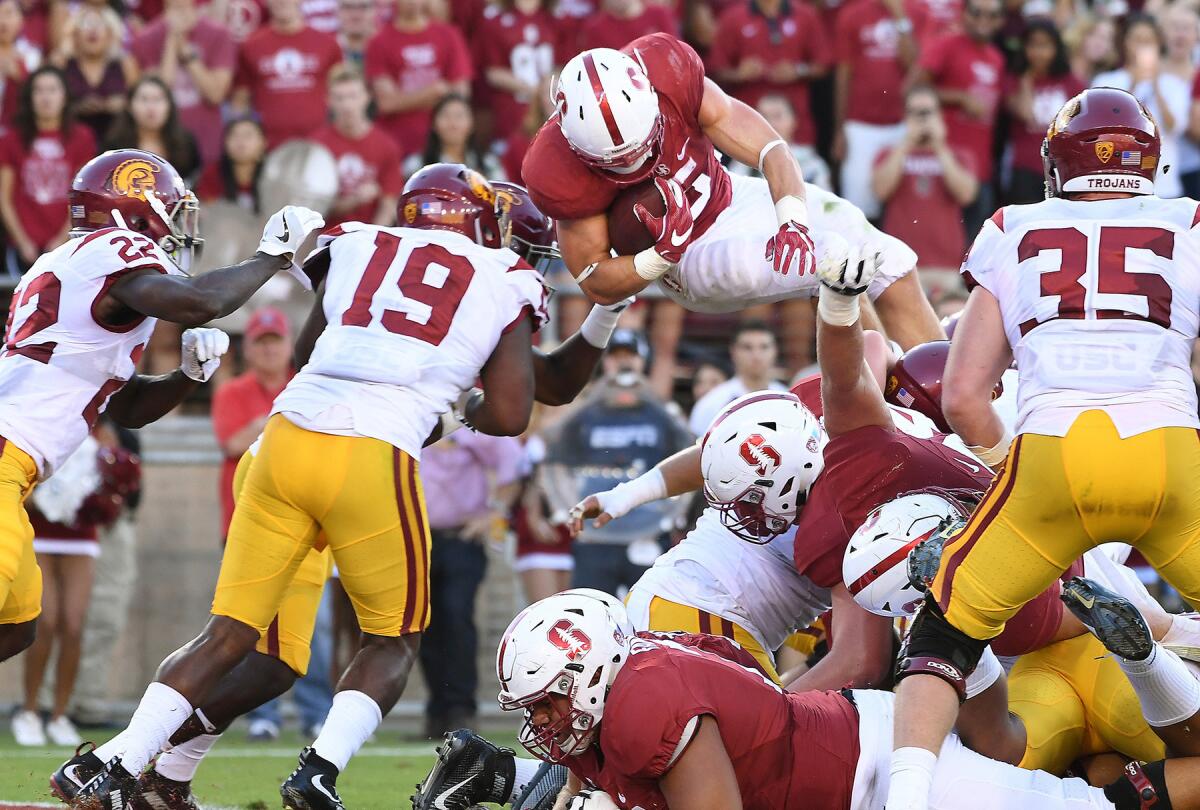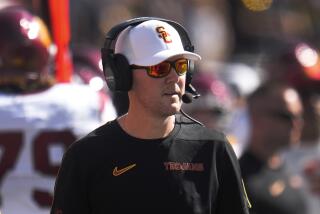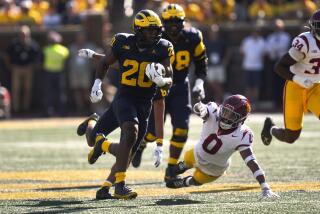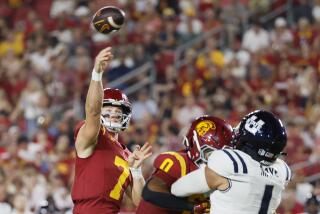USC sputters to Utah as it tries to solve its combustion problem

They are the plays that will live, for USC, in infamy — or at least until the defense can correct itself.
A broken wheel route. A safety and a cornerback both blitzing. An unoccupied gap against Christian McCaffrey. A failure to play through the whistle.
Heading into a pivotal Pac-12 Conference game against No. 24 Utah on Friday night, those kinds of breakdowns have haunted the Trojans.
“That’s what’s really hurting us right now,” linebacker Michael Hutchings said. “Those explosive plays.”
USC’s defense has had a problem with combustion. Aside from a collapse in the second half against Stanford, the Trojans have mostly suffocated opponents on a down-to-down basis.
But on plays when USC (1-2) has imploded, it has been spectacular. Against Stanford, two mental mistakes — leaving McCaffrey wide open, then, later, chasing him recklessly on a reverse — led to touchdowns. A third error put Stanford on the goal line and led to a third touchdown. All three Cardinal touchdown drives included a play that went for at least 33 yards.
USC’s gut-check game against Utah (3-0) could again hinge on its ability to avoid the mental errors that create major blowups. On paper, USC’s defense matches up favorably against Utah’s offense. The game could be a defensive struggle.
But, USC Coach Clay Helton said, “It’s always going to be that difference of three to four plays in a game.”
The Trojans have given up 11 plays of 20 yards or more. That in itself should not be a fatal flaw. USC on offense has produced eight plays of 20 yards or more.
The problem has been magnitude. Of those 11 plays by Trojans opponents, eight have gone for 40 yards or more. Two have gone for more than 70.
“That can be a drive or a game-swinger,” Hutchings said.
Said linebacker Porter Gustin: “We eliminate those, and I think we’re pretty good.”
The problem is vexing because there is no simple fix. Hutchings said it would take time and experience.
In long runs, players say the most common mistake is misalignment. Plug the wrong gap and a running back is on his way to the open field.
In the passing game, it is miscommunication.
“It’s loud, so words blur a little bit,” Gustin said. “You think it’s something different, you’re running two different plays, and it leaves a guy wide open.”
Safety Chris Hawkins said that’s what happened against Alabama, when he and cornerback Iman Marshall blitzed on the same play, facilitating an easy 71-yard touchdown pass.
“We’ve got to be more mentally prepared,” linebacker Cameron Smith said.
The mistakes have been magnified by the quality of opponent USC has played early on. Utah State managed 24- and 43-yard passes, but No. 1 Alabama ripped off six big plays.
Usually a defense, especially one playing a new system, gets better as the season progresses.
“We don’t have the fortune to play smaller schools and try to correct those before we get to the big ones,” linebackers coach Johnny Nansen said.
The offense has made its share of mistakes too. Six false-start penalties against Stanford doomed the Trojans to a 33% conversion rate on third downs.
USC belatedly addressed the penalties by using a silent count in the second half against Stanford, so the defense couldn’t mimic USC’s calls. And to address its own shortage of explosive plays, USC has promoted Sam Darnold and demoted Max Browne at quarterback and has indicated it could use cornerback Adoree’ Jackson on offense.
Another loss would leave USC with its first 1-3 start since 2001 and drop Helton to 1-5 since being named full-time coach.
So it was with some urgency that Helton said he looks “forward to, hopefully, those corrections being made this week. And in a hurry.”
zach.helfand@latimes.com
Twitter: @zhelfand
More to Read
Go beyond the scoreboard
Get the latest on L.A.'s teams in the daily Sports Report newsletter.
You may occasionally receive promotional content from the Los Angeles Times.






